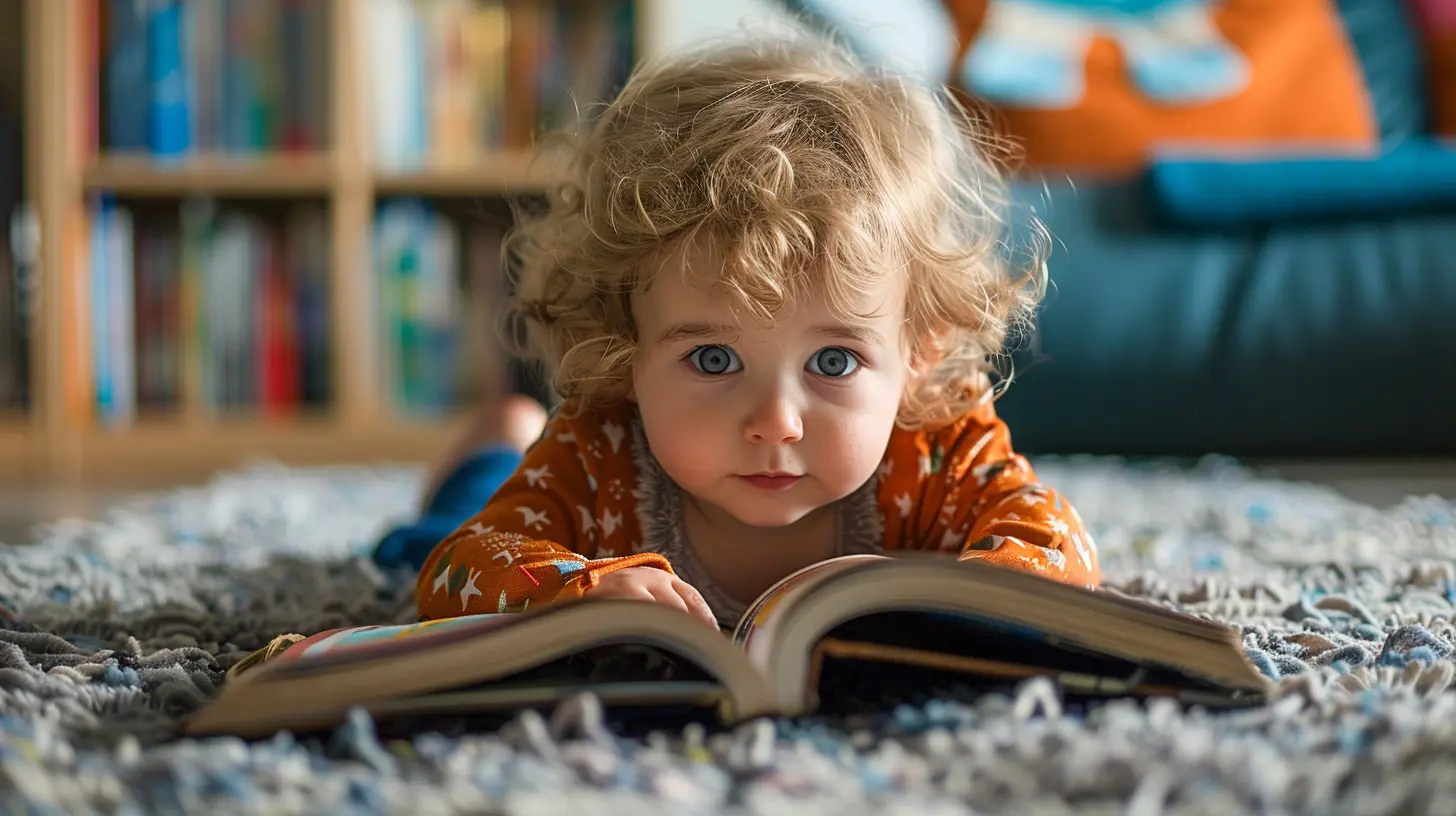The Connection Between Attachment Parenting and Homeschooling: Fostering Lifelong Learning
6 July 2025
Ever noticed how some things in life just click together like peanut butter and jelly? Or coffee and those precious five minutes of silence in the morning? That’s kind of how attachment parenting and homeschooling fit together—like two cozy puzzle pieces in the chaotic jigsaw puzzle of parenting.
In this post, we’re diving into the beautiful, messy, heartwarming connection between attachment parenting and homeschooling. Whether you're an attachment parent already dipping your toes into homeschool waters or just curious how these two worlds collide (nicely, by the way), grab your favorite beverage and let’s chat—parent to parent.

What Is Attachment Parenting (AKA the Ultimate Snuggle Lifestyle)?
Attachment parenting isn’t just about babywearing until your back gives out or co-sleeping until your kiddo claims your pillow as theirs. It’s a parenting philosophy that focuses on connection. Think of it as a relationship-first approach. The core idea? Children thrive when they feel secure, loved, and deeply connected to their caregivers.Attachment parenting emphasizes:
- Responsiveness to needs (because yes, your baby will cry sometimes)
- Physical closeness (hello slings, wraps, and tiny humans glued to your hip)
- Positive discipline (less “go to your room!” and more “let’s talk this out”)
- Emotional attunement (you know, having a sixth sense for your child’s moods)
It’s about building trust. Bonding. Turning moments into memories and tantrums into teaching tools. Basically, it’s parenting with your heart wide open.

Homeschooling: Not Just for Kids in Prairie Dresses Anymore
Now, let’s bust a myth right off the bat: homeschooling is no longer reserved for pioneer families or those who grind their own wheat in a log cabin. Today’s homeschooling families are as diverse as a farmer’s market in summer.Homeschooling comes in all shapes and sizes—from structured curriculums that look like traditional school to unschooling, where kids follow their interests and curiosity rules the day.
But at its core, homeschooling offers:
- Flexibility (so long, school bells and assembly lines)
- One-on-one learning (translation: fewer distractions and more “Aha!” moments)
- Emotional safety (bully-free zones FTW)
- Customized education (because not all kids learn the same way, right?)
And perhaps most importantly? Homeschooling allows families to stay connected. Which... surprise! Is exactly what attachment parenting is all about.

So, What's the Link Between the Two?
If attachment parenting is the warm, nurturing soil, homeschooling is the sunlight that helps your child grow strong roots and stretch toward the sky.Here’s the thing: both are centered around relationships. They prioritize emotional connection as the foundation for growth, learning, and confidence. When you homeschool within an attachment parenting framework, you’re not just raising smart kids—you’re raising happy, resilient, lifelong learners.
Let’s unpack that a bit more.
1. Trust as a Learning Catalyst
Kids learn best when they feel safe. Attachment parenting builds a strong bond of trust between parent and child. That trust doesn’t disappear once your child hits school age—in fact, it becomes the launchpad for their learning journey.When you homeschool with that same trust-based mindset, your child knows they’re safe to make mistakes, ask questions, and veer off the beaten path to follow their curiosity. And isn’t that where real learning happens?
2. Emotional Safety Leads to Academic Confidence
Ever tried to solve a math problem while stressed out? It’s like trying to assemble IKEA furniture without the instructions—frustrating and messy.Emotional regulation plays a major role in how kids learn. Homeschooling within the context of attachment parenting removes many of the stressors of a traditional classroom, allowing kids to focus on learning rather than navigating social hierarchies, rigid schedules, or test anxiety.
3. Individualized Learning Just Makes Sense
Attachment parenting recognizes that every child is unique. Homeschooling lets you lean into that. Not a morning person? Start school after breakfast and a snuggle. Want to spend all day on science because your kid is currently obsessed with volcanoes? GO FOR IT.This tailored approach nurtures a love of learning rather than just a compliance with standards.
4. Learning Happens Everywhere—and All the Time
One of the perks of both attachment parenting and homeschooling is that they blur the lines between “life” and “education.” Reading at bedtime, counting eggs while baking, talking about the weather while walking the dog—it all counts!In this model, learning isn’t something that only happens between 8 a.m. and 3 p.m. It’s a lifestyle. And when your child learns that education is all around them, you’re setting them up for lifelong curiosity.
5. Incorporating Gentle Discipline Into Homeschooling
Attachment parenting often swaps out punishment for connection-based discipline—think gentle redirection, logical consequences, and respect-based communication.This dovetails beautifully into homeschooling. Instead of using rewards and punishments to get through subjects, your child learns why things matter. They’re more likely to stay motivated because they’re not learning out of fear—they’re learning from inspiration (and maybe because you let them do math in their pajamas... hey, motivation is motivation, right?).
6. Sibling Bonds and Family Dynamics
One beautiful side-effect of blending attachment parenting with homeschooling? Sibling closeness.Sure, there may be epic living room wrestling matches. But there’s also collaboration, empathy, shared jokes, and a deep sense of “we’re in this together.” Siblings learn to cooperate, teach each other, and navigate conflicts in a safe environment where emotional intelligence is valued.

Real Talk: Is This Easy?
Nope. Let’s not sugarcoat it.It’s hard. Like “did I just reheat my coffee four times and still forget where I put it?” kind of hard.
Attachment parenting takes patience. Homeschooling requires commitment. Blending the two? Well, imagine juggling flaming swords while riding a unicycle on a tightrope made of spaghetti.
But—it’s worth it.
You get to witness those “click” moments firsthand. You learn with your children. Your home becomes a haven of learning, laughter, and connection. And even on the hard days, you know you’re giving your child something priceless: your presence.
Tips for Making It Work (Without Losing Your Mind)
Now for the part where we sprinkle a little sanity into the mix. If you're going the attachment-parenting-homeschooling route, here are a few survival tips from someone who's been there, worn the baby, and stepped on Legos at 3 a.m.1. Prioritize Self-Care (Yes, Really)
You can't pour from an empty coffee mug. Take time for yourself, even if it's ten minutes locked in the bathroom scrolling memes. Fill your cup so you can keep showing up with love.2. Don’t Try to Recreate School at Home
Let go of rigid schedules. Embrace flow. This is your chance to reimagine learning on your terms.3. Lean on Community
Whether it’s online forums, local playgroups, or virtual support groups, find your tribe. Bonus tip? Befriend a mom who’s a week ahead of you in the process—they’ll be your guiding light and probably won’t judge the snack crumbs on your couch.4. Follow the Interest Breadcrumbs
Interest-led learning is like giving your child a treasure map to their brain. If they want to learn about dinosaurs, build a whole week’s curriculum around T-Rex facts and fossil crafts. Engagement skyrockets when kids get a say.5. Embrace the Chaos
Not every day will be Instagram-worthy. Some days will be more “everyone cried and we just watched documentaries.” That’s okay. That’s life. That’s learning.
The Long-Term Payoff: Raising Independent, Curious Humans
At the end of the day, combining attachment parenting and homeschooling isn’t just about academics or routines—it’s about raising humans who know they’re loved, respected, and capable.You're planting seeds of empathy. You're modeling communication, compassion, and curiosity. Over time, those seeds grow into strong, independent thinkers who aren’t afraid to ask questions—and seek the answers.
Lifelong learning isn’t a buzzword in your house. It’s the heartbeat of your routine.
Final Thoughts
Attachment parenting and homeschooling go together like bedtime stories and warm blankets. Both are rooted in connection. Both push back against the “one-size-fits-all” mindset. And together? They create a powerful framework for raising kids who love to learn—and love to live.So if you’ve ever wondered whether your gentle parenting style can jive with homeschooling—worry not. You’re already laying the foundation. You’ve built trust. You’ve nurtured curiosity. Now? You just keep walking together, hand in hand, learning as you go.
And don’t forget to high-five yourself once in a while. You’re doing amazing.
all images in this post were generated using AI tools
Category:
Attachment ParentingAuthor:

Max Shaffer
Discussion
rate this article
2 comments
Alexia Roth
Who knew cuddles and curriculums went hand in hand? Attachment parenting and homeschooling make the perfect recipe for nurturing minds and hearts—plus, who needs a school bell when you have snack time?
November 1, 2025 at 3:34 AM

Max Shaffer
Thank you! It's wonderful to see how attachment parenting and homeschooling create a nurturing environment that supports both emotional and intellectual growth. Snack time definitely adds a fun twist!
Tempest Elliott
Who knew cuddles and crayons could create such a brilliant blend of learning magic?!
July 21, 2025 at 4:18 PM

Max Shaffer
Thank you! It's amazing how nurturing environments can spark creativity and a love for learning!


